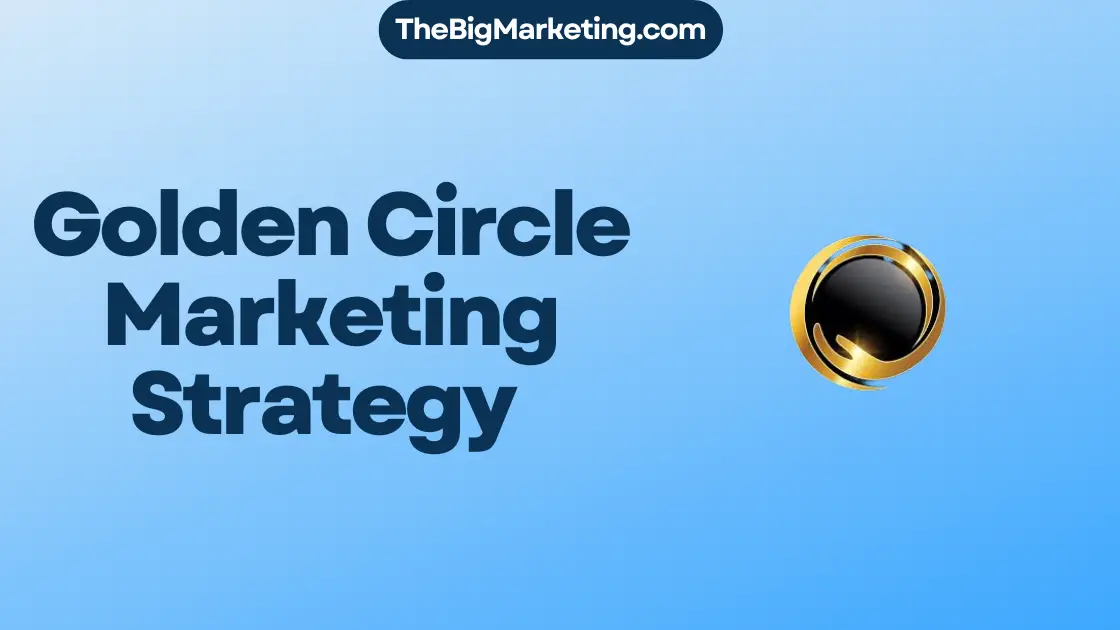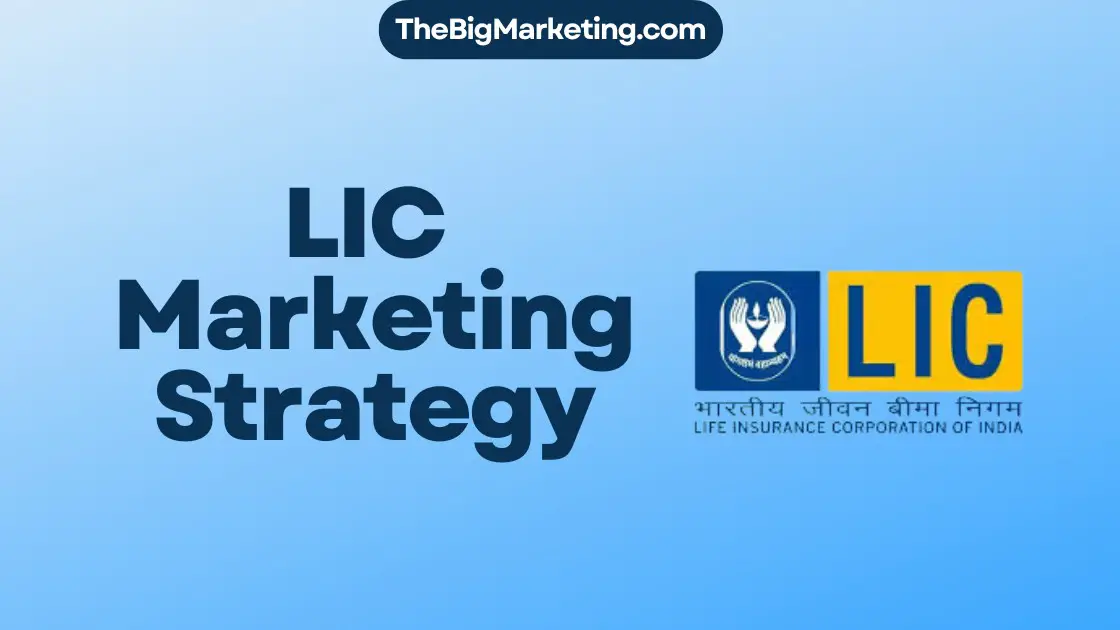E-commerce has revolutionized the shopping experience, allowing consumers to purchase goods and services online from the comfort of their own homes. In this article, we will delve into the importance of e-commerce marketing and explore its role in driving business success. We will also differentiate between e-commerce marketing and advertising, highlighting the unique benefits of implementing a comprehensive marketing strategy for online stores.
Effective e-commerce marketing is crucial for businesses to thrive in the digital landscape of 2024. By employing various marketing tactics and strategies, businesses can attract and engage their target audience, drive traffic to their online stores, and ultimately boost sales and customer loyalty.
Key Takeaways:
- E-commerce marketing is essential for businesses to succeed in the digital landscape.
- A comprehensive marketing strategy can drive traffic, increase conversions, and foster customer loyalty.
- E-commerce marketing involves various tactics such as SEO, social media marketing, and email marketing.
- Effective e-commerce marketing can differentiate businesses from competitors and improve brand visibility.
- Continuous optimization and adaptation to market trends are vital for long-term success in e-commerce.
What Is E-Commerce Marketing?
E-commerce marketing is a specialized form of marketing that focuses on promoting online stores and platforms to attract customers. It involves driving traffic to the online store, converting that traffic into customers, and retaining those customers post-purchase. E-commerce marketers use various approaches such as social media marketing, content marketing, search engine optimization (SEO), email marketing, and influencer marketing to achieve these goals. The goal of e-commerce marketing is to build brand awareness, foster customer loyalty, and increase online sales.
Effective E-Commerce Marketing Tactics
When it comes to e-commerce marketing tactics, it’s essential to employ a multi-channel approach that utilizes various strategies to reach and engage with potential customers. Here are some effective tactics:
- Content Marketing: Creating and sharing valuable, informative content such as blog posts, videos, and guides can attract and educate potential customers, positioning your online store as an authority in the industry.
- Social Media Marketing: Leveraging popular social media platforms like Facebook, Instagram, and Twitter can help reach a wider audience, generate brand awareness, and drive traffic to your online store.
- Search Engine Optimization (SEO): Optimizing your online store for search engines can improve its visibility in search results and drive organic traffic. This includes optimizing product descriptions, using relevant keywords, and earning high-quality backlinks.
- Email Marketing: Building an email list allows you to communicate directly with your customers, send targeted promotions, and nurture customer relationships over time.
- Influencer Marketing: Collaborating with influencers in your niche can help expand your reach, tap into their engaged audiences, and drive traffic to your online store through sponsored content or product reviews.
By implementing these e-commerce marketing tactics, you can increase brand visibility, attract qualified traffic, and ultimately boost online sales.
| E-commerce Marketing Tactics | Benefits |
|---|---|
| Content Marketing | Builds brand authority and educates customers |
| Social Media Marketing | Expands reach and generates brand awareness |
| Search Engine Optimization (SEO) | Improves online visibility and drives organic traffic |
| Email Marketing | Directly communicates with customers and nurtures relationships |
| Influencer Marketing | Expands reach through engaged audiences of influencers |
E-Commerce Marketing vs. E-Commerce Advertising
E-commerce marketing and e-commerce advertising are two essential components of a successful online business strategy. While they work in harmony to attract online traffic and boost sales, there are distinct differences between the two approaches.
E-Commerce Marketing
E-commerce marketing encompasses a range of tactics aimed at promoting products or services within the digital environment. Its primary goal is to elevate brand visibility, refine the user experience, and foster customer trust. E-commerce marketing strategies often focus on:
- Search engine optimization (SEO) to improve organic visibility in search engine results
- Social media marketing to engage with target audiences and build brand loyalty
- Content marketing to provide valuable information and establish thought leadership
- Email marketing to nurture customer relationships and drive repeat purchases
By employing various e-commerce marketing tactics, businesses can enhance their brand presence, connect with their target audience, and drive traffic to their online store.
E-Commerce Advertising
On the other hand, e-commerce advertising is a paid approach to drive traffic and increase sales. It involves strategic placement of ads on search engines, social media platforms, websites, and apps to capture the attention of potential customers. E-commerce advertising campaigns may include:
- Pay-per-click (PPC) advertising to bid on relevant keywords and display ads in search engine results
- Display advertising to showcase products or services on websites and social media platforms
- Social media advertising to target specific audiences based on their demographics, interests, and behaviors
- Remarketing ads to re-engage users who have previously visited the online store but did not complete a purchase
E-commerce advertising serves as a direct means of acquiring customers by driving targeted traffic to the online store and increasing sales conversions.
Both e-commerce marketing and e-commerce advertising play a vital role in the success of an online business. While marketing focuses on building brand awareness, refining the user experience, and fostering trust, advertising aims to drive traffic and increase sales through paid campaigns. Implementing a well-rounded strategy that combines the strengths of both approaches is crucial for maximizing online visibility, attracting customers, and achieving e-commerce success.
| E-Commerce Marketing | E-Commerce Advertising |
|---|---|
| Elevates brand visibility | Drives targeted traffic |
| Refines the user experience | Increases sales conversions |
| Fosters customer trust | Targets specific audiences |
| Builds brand loyalty | Uses strategic ad placement |
Why E-Commerce Marketing Is Important
E-commerce marketing plays a crucial role in the success of online businesses. By employing various strategies and tactics, businesses can effectively build their brand, acquire customers, and optimize conversions. Here are some key reasons why e-commerce marketing is important:
1. Building Brand Awareness
One of the primary objectives of e-commerce marketing is to establish brand awareness among potential customers. By utilizing strategies such as search engine optimization (SEO), social media marketing, and email marketing, businesses can increase their visibility and reach a wider audience. This helps in creating brand recognition and familiarity, making it more likely for customers to choose their products or services over competitors.
2. Cost-Effectiveness
E-commerce marketing offers cost-effective solutions compared to traditional marketing methods. With lower upfront costs and a higher return on investment (ROI), businesses can allocate their budget more efficiently. Online advertising platforms, such as social media ads and search engine marketing, allow businesses to target specific audiences, reducing unnecessary ad spend and maximizing conversions.
3. Round-the-Clock Availability
E-commerce marketing enables businesses to reach customers at any time, ensuring round-the-clock availability of products or services. In the digital age, where consumers expect instant gratification, this accessibility is crucial for attracting and retaining customers. By implementing e-commerce marketing strategies, businesses can provide a seamless shopping experience and cater to the needs of their target audience.
4. Data-Driven Marketing
E-commerce marketing allows businesses to gather valuable data on customer behavior and preferences. By tracking and analyzing this data, businesses can make informed decisions and tailor their marketing efforts accordingly. This data-driven approach enables businesses to deliver personalized experiences, anticipate customer needs, and optimize conversion rates.
Overall, e-commerce marketing is vital for businesses looking to thrive in the competitive digital landscape. It helps build brand awareness, optimize cost-efficiency, ensure round-the-clock availability, and enable data-driven decision-making.
Types of E-Commerce Marketing
When it comes to building a successful marketing campaign for your e-commerce business, there are several types of e-commerce marketing strategies that you can employ. These strategies are designed to enhance your online presence, attract and retain customers, and ultimately drive sales. Let’s explore some of the key types of e-commerce marketing that businesses use:
E-Commerce Platforms
E-commerce platforms provide the foundation for setting up and managing your online store. These platforms offer a range of features and functionalities to facilitate the smooth operation of your e-commerce business. From customizable designs and layouts to secure payment gateways and inventory management systems, these platforms empower businesses to create captivating online stores that deliver exceptional customer experiences. Popular e-commerce platforms include Shopify, WooCommerce, and BigCommerce.
Content Marketing
Content marketing plays a crucial role in attracting and retaining customers. By creating and sharing valuable and relevant content, businesses can establish themselves as industry leaders, build trust with their audience, and drive traffic to their online stores. Content can take various forms, such as blog posts, articles, videos, infographics, and ebooks. It should be tailored to address the needs and interests of your target audience, positioning your brand as a valuable resource and driving engagement.
Email Marketing
Email marketing is a powerful tool for engaging with customers and nurturing relationships. By leveraging email campaigns, businesses can reach customers directly, personalize their messaging, and send targeted promotions and updates. From welcome emails and abandoned cart reminders to special offers and exclusive discounts, email marketing enables businesses to stay top-of-mind with their customers and drive repeat purchases.
Social Media Marketing
Social media platforms have become essential channels for businesses to connect with their target audience, build brand awareness, and drive traffic to their online stores. With the right social media marketing strategy, businesses can engage with potential customers, showcase their products or services, and encourage sharing and word-of-mouth recommendations. Platforms like Facebook, Instagram, Twitter, and Pinterest offer robust advertising tools that allow businesses to target specific demographics, interests, and behaviors.
Search Engine Optimization (SEO)
Search engine optimization (SEO) is a critical component of e-commerce marketing that focuses on improving online visibility and driving organic traffic to your website. By optimizing your website and content for search engines, you can increase your chances of ranking higher in search engine results pages (SERPs) and attract qualified visitors to your online store. SEO involves keyword research, on-page optimization, link building, and technical enhancements to help search engines understand and index your website effectively.
With a comprehensive e-commerce marketing strategy that incorporates these types of marketing, businesses can maximize their online retail promotions and create effective e-commerce sales funnels. Let’s take a look at a summary of the different types of e-commerce marketing in the table below:
| E-Commerce Marketing Type | Description |
|---|---|
| E-commerce Platforms | Platforms for setting up and managing online stores |
| Content Marketing | Creating and sharing valuable content to attract and retain customers |
| Email Marketing | Direct communication channel with customers through email campaigns |
| Social Media Marketing | Utilizing social media platforms to engage with potential customers |
| Search Engine Optimization (SEO) | Optimizing website and content to increase visibility on search engines |
By leveraging these types of e-commerce marketing strategies, businesses can optimize their online presence, drive traffic to their online stores, and ultimately boost sales. Tailoring your marketing approach to your target audience and consistently refining your strategies will help you stay ahead in the competitive world of e-commerce.
What Is an Ecommerce Website?
An e-commerce website serves as a platform that enables businesses to efficiently buy and sell products and services online, expanding their reach beyond local boundaries. These websites are designed to provide convenience and accessibility, allowing consumers to shop anytime, anywhere. Whether it’s a small local business or a large corporation, e-commerce websites can benefit enterprises of all sizes.
Creating a successful e-commerce website involves several key elements. First and foremost, the website must have a user-friendly interface that ensures a seamless shopping experience. Easy navigation, intuitive product search, and clear categories contribute to customer satisfaction and increased sales. Additionally, it is essential to have a secure payment gateway to protect customer information and foster trust in e-commerce transactions.
Organizing the product catalog effectively is crucial for customers to easily find desired items. Clear product descriptions, high-quality images, and accurate inventory information help customers make informed purchasing decisions. It is also imperative to ensure that the website is mobile responsive, allowing customers to browse and shop using their smartphones and tablets.
To maintain credibility and comply with legal requirements, e-commerce websites must display terms and conditions, privacy policies, and return/refund policies clearly. These regulations contribute to building trust and customer confidence in the online shopping experience. Lastly, optimizing the website for search engine rankings is vital to attract organic traffic and enhance visibility, employing effective SEO strategies such as keyword research, meta tags, and quality content.
Creating a visually appealing and user-friendly e-commerce website is the foundation for implementing successful e-commerce sales strategies and acquiring new customers. When executed effectively, a well-designed website can significantly contribute to the growth and success of an e-commerce business.
| E-commerce Website Elements | Description |
|---|---|
| User-friendly interface | A well-designed interface that ensures easy navigation and a seamless shopping experience for customers. |
| Secure payment gateway | A reliable payment gateway that protects customer information during online transactions. |
| Organized product catalog | Clear categories, detailed product descriptions, high-quality images, and accurate inventory information for easy product discovery. |
| Mobile responsiveness | A website that adapts to different devices’ screens, providing a consistent shopping experience across desktop, mobile, and tablet devices. |
| Legal compliance | Displaying essential legal information such as terms and conditions, privacy policies, and return/refund policies. |
| Search engine optimization (SEO) | Optimizing the website for search engines to improve visibility and attract organic traffic. |
How Does Ecommerce Work?
E-commerce has revolutionized the way businesses sell products and services by providing various avenues for online transactions. Understanding how ecommerce works is essential for businesses looking to thrive in the digital marketplace.
There are three common methods through which businesses can engage in e-commerce:
- Creating an E-commerce Website: Businesses can build and operate their own e-commerce websites, allowing them to have complete control over the user experience, branding, and sales strategies. This approach provides businesses with the flexibility to implement custom sales strategies suited to their unique needs.
- Using E-commerce Platforms: E-commerce platforms like Shopify, WooCommerce, and BigCommerce enable businesses to set up online stores quickly and easily. These platforms offer pre-built templates and features that streamline the process of launching an online store. They also often provide tools for inventory management, payment processing, and order fulfillment.
- Selling on Marketplaces: Marketplaces such as Amazon, eBay, and Etsy provide businesses with established platforms to showcase and sell their products. By leveraging the built-in customer base of these marketplaces, businesses can reach a wider audience and benefit from the trust and credibility associated with these platforms.
Once businesses have established their online presence, the e-commerce process generally follows these steps:
- Customer Exploration: Potential customers visit the online store or website to explore the available products or services. They can navigate through different product categories, read descriptions, view images, and compare options.
- Adding to Cart: Once customers find products they wish to purchase, they add them to their virtual shopping carts. The cart keeps track of the items, quantities, and prices.
- Checkout Process: Customers proceed to the checkout process, where they provide their shipping address, select a payment method, and review their order. During this stage, e-commerce websites must ensure a seamless user experience, including secure payment gateways and clear instructions.
- Seller Notification: After the order is successfully placed, the seller receives a notification containing the details of the purchase. This notification triggers the order fulfillment process.
- Order Fulfillment: The seller prepares the products for shipping and arranges for their delivery to the customer’s address. This process may involve packaging, labeling, and coordinating with shipping carriers to ensure timely and secure delivery.
An essential aspect of e-commerce is establishing secure payment gateways to protect customer information during the checkout process. Additionally, businesses must prioritize providing a seamless user experience to enhance customer satisfaction and increase the likelihood of repeat purchases.
By understanding how e-commerce works and implementing effective sales strategies, businesses can optimize their online presence, attract customers, and facilitate successful transactions.
Types of Ecommerce Businesses Explained
E-commerce encompasses a range of business models and approaches, each requiring specific strategies and approaches to succeed. Here are the main types of e-commerce businesses:
1. Business-to-Consumer (B2C) Businesses
B2C businesses sell products or services directly to individual consumers. These businesses typically have online stores where customers can browse, select, and purchase products or services. Examples of B2C e-commerce businesses include Amazon, Walmart, and Best Buy.
2. Business-to-Business (B2B) Businesses
B2B businesses focus on selling products or services to other businesses. These businesses often involve bulk orders, contracts, and long-term partnerships. B2B e-commerce platforms facilitate transactions between businesses, making it easier to manage and streamline purchasing processes. Examples of B2B e-commerce businesses include Alibaba, Thomasnet, and Global Sources.
3. Business-to-Government (B2G) Businesses
B2G businesses sell products or services to government entities at local, state, or federal levels. These businesses often participate in government procurement processes and fulfill government contracts. B2G e-commerce facilitates the interaction and transactions between businesses and government entities. Examples of B2G e-commerce businesses include GovDeals and GSA Advantage.
4. Consumer-to-Consumer (C2C) Businesses
C2C businesses involve consumers selling products or services directly to other consumers. These businesses provide platforms or marketplaces where individuals can list, buy, and sell items. C2C e-commerce platforms act as intermediaries, facilitating transactions between individual buyers and sellers. Examples of C2C e-commerce businesses include eBay, Poshmark, and Etsy.
5. Consumer-to-Business (C2B) Businesses
C2B businesses involve individuals selling products or services to companies. This type of e-commerce often occurs in freelance and gig economy scenarios, where individuals offer their skills or expertise directly to businesses. C2B transactions can happen through dedicated platforms or through direct communication channels. Examples of C2B e-commerce businesses include Upwork, Fiverr, and Shutterstock.
6. Consumer-to-Government (C2G) Businesses
C2G businesses involve consumers interacting with government entities to access services, submit documents, or fulfill requirements. These businesses often provide online platforms or portals where individuals can complete necessary tasks or transactions with government agencies. Examples of C2G e-commerce businesses include online filing platforms for taxes, permit application portals, and government service facilitators.
Understanding the different types of e-commerce businesses is crucial for developing targeted sales strategies and effectively reaching the intended target audience. With the right approach, businesses can capitalize on the unique opportunities presented by each business model and thrive in the competitive world of online sales.
The Benefits of Ecommerce Businesses
E-commerce businesses offer numerous advantages for both buyers and sellers. By embracing the online marketplace, businesses can harness the power of technology to drive growth, expand their reach, and increase revenue. Let’s explore the key benefits of e-commerce businesses:
1. Expanded Market Reach
E-commerce provides businesses with a broader customer base, allowing them to transcend geographical boundaries and target regional or global markets. Online stores can reach potential customers far beyond their local area, thereby unlocking new opportunities for growth and customer acquisition. With effective online sales strategies, businesses can tap into a vast pool of potential buyers and expand their market presence.
2. Convenience and Accessibility
One of the most significant advantages of e-commerce is the convenience it offers to consumers. Online shopping allows customers to browse and purchase products or services anytime and anywhere, without the need to visit physical stores. This accessibility factor eliminates the limitations of traditional brick-and-mortar stores and empowers consumers with the freedom to shop at their own convenience, resulting in increased customer satisfaction and loyalty.
3. Cost Savings
E-commerce businesses can significantly reduce costs compared to their traditional counterparts. By eliminating the need for physical stores and reducing overhead expenses such as rent, utilities, and in-store staffing, e-commerce businesses can allocate their resources more efficiently. This cost-saving advantage allows businesses to offer competitive prices to customers while maintaining healthy profit margins.
4. Personalized Marketing and Data Insights
E-commerce provides businesses with valuable customer data that can be used to tailor marketing efforts and create personalized experiences. Through analytics and customer behavior tracking, businesses can gain insights into customer preferences, purchase patterns, and shopping habits. This data-driven approach empowers businesses to deliver targeted marketing campaigns, implement effective online sales strategies, and build stronger relationships with customers.
5. Faster Service and Flexible Payment Options
E-commerce businesses excel in delivering faster service to customers. Online orders can be processed and fulfilled quickly, reducing the waiting time for customers. Additionally, e-commerce platforms offer a variety of payment options, including credit cards, digital wallets, and mobile payments, providing flexibility and convenience to buyers. By streamlining the purchasing process, e-commerce businesses enhance customer satisfaction and boost sales.
6. Affordable Marketing Opportunities
Compared to traditional marketing channels, e-commerce businesses can access affordable and effective marketing opportunities. Digital marketing strategies such as search engine optimization (SEO), social media advertising, and email marketing allow businesses to reach a targeted audience at a fraction of the cost of traditional advertising methods. These cost-effective marketing channels help e-commerce businesses maximize their online visibility, attract new customers, and drive sales.
Overall, e-commerce businesses offer a multitude of benefits for both buyers and sellers. With the ability to reach larger markets, provide convenience, reduce costs, personalize marketing efforts, deliver faster service, and access affordable marketing opportunities, e-commerce businesses have become a cornerstone of the modern retail landscape.
The Challenges of Ecommerce Businesses
While e-commerce businesses offer numerous benefits, they also encounter several challenges that require careful navigation. From ensuring website security to attracting and retaining customers, successful e-commerce ventures require strategic solutions. In this section, we will explore some of the key challenges faced by e-commerce businesses and discuss effective strategies to overcome them.
Ensuring Website Security
Website security is a paramount concern for e-commerce businesses. Protecting customer information and maintaining their trust is essential to foster customer acquisition and retention. Implementing robust security measures, such as SSL encryption, secure payment gateways, and regular vulnerability assessments, safeguards sensitive data and provides customers with peace of mind.
Managing Inventory
Inventory management poses a significant challenge for e-commerce businesses. With a large variety of products, tracking stock levels, preventing overselling, and ensuring timely restocking become complex tasks. Implementing efficient inventory management systems and processes, including automated inventory tracking and forecasting, helps maintain optimal stock levels, reduces out-of-stock situations, and improves overall customer satisfaction.
Attracting Traffic to E-commerce Websites
Attracting traffic to e-commerce websites remains a considerable challenge. The competition for online visibility is fierce, necessitating creative marketing strategies to stand out. E-commerce businesses can leverage various tactics, including search engine optimization (SEO), content marketing, online advertising, influencer partnerships, and social media engagement, to drive targeted traffic to their websites and improve customer acquisition rates.
Addressing Cart Abandonment
Cart abandonment is a common issue faced by e-commerce businesses. Customers often add items to their carts but leave the site without completing the purchase. To combat this challenge, businesses can employ strategies such as sending personalized cart abandonment emails with incentives, optimizing the checkout process, implementing remarketing campaigns, and offering flexible payment options to entice customers back to the website and recover lost sales.
Retaining Customers and Building Loyalty
Retaining customers and building loyalty is vital for long-term success in e-commerce. With countless options available to consumers, businesses must focus on enhancing the customer experience, providing exceptional post-purchase support, and nurturing ongoing relationships. Loyalty programs, personalized recommendations, exclusive promotions, and proactive customer service efforts foster customer loyalty, encourage repeat purchases, and generate positive word-of-mouth referrals.
Adapting to Market Changes
E-commerce businesses operate in a dynamic and ever-evolving market. Staying ahead of trends, technological advancements, and changing consumer preferences is crucial to remaining competitive. Implementing a proactive approach to identify market shifts, analyzing customer insights, and adapting business strategies accordingly ensures continued growth and success in the ever-changing e-commerce landscape.
Overcoming these challenges requires a strategic and data-driven approach. By addressing website security concerns, optimizing inventory management, attracting targeted traffic, addressing cart abandonment, building customer loyalty, and staying adaptable to market changes, e-commerce businesses can position themselves for sustainable growth and achieve optimal customer acquisition and conversion rates.
Conclusion
Crafting an effective marketing strategy is essential for the success of an e-commerce business. By leveraging various types of e-commerce marketing, businesses can build brand awareness, drive traffic to their online store, convert visitors into customers, and retain those customers post-purchase. It is important to stay up-to-date with the latest marketing trends, continually optimize the online store, and engage with customers through personalized experiences. With a well-rounded marketing strategy, businesses can enhance their online presence, increase sales, and achieve long-term success in the competitive e-commerce landscape.






